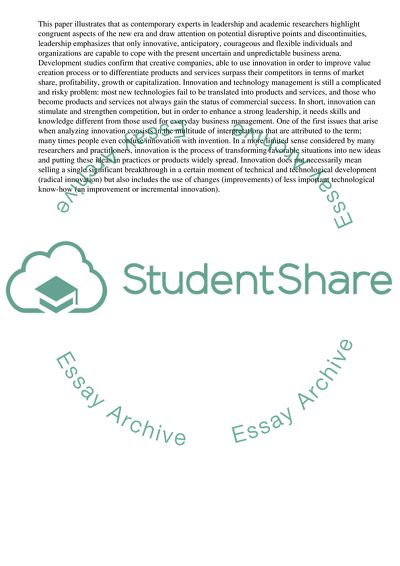Cite this document
(“Innovation and Leadership Assignment Example | Topics and Well Written Essays - 3250 words”, n.d.)
Innovation and Leadership Assignment Example | Topics and Well Written Essays - 3250 words. Retrieved from https://studentshare.org/business/1448347-critically-evaluate-the-claim-that-to-be-innovative-all-an-organisation-needs-is-leadership
Innovation and Leadership Assignment Example | Topics and Well Written Essays - 3250 words. Retrieved from https://studentshare.org/business/1448347-critically-evaluate-the-claim-that-to-be-innovative-all-an-organisation-needs-is-leadership
(Innovation and Leadership Assignment Example | Topics and Well Written Essays - 3250 Words)
Innovation and Leadership Assignment Example | Topics and Well Written Essays - 3250 Words. https://studentshare.org/business/1448347-critically-evaluate-the-claim-that-to-be-innovative-all-an-organisation-needs-is-leadership.
Innovation and Leadership Assignment Example | Topics and Well Written Essays - 3250 Words. https://studentshare.org/business/1448347-critically-evaluate-the-claim-that-to-be-innovative-all-an-organisation-needs-is-leadership.
“Innovation and Leadership Assignment Example | Topics and Well Written Essays - 3250 Words”, n.d. https://studentshare.org/business/1448347-critically-evaluate-the-claim-that-to-be-innovative-all-an-organisation-needs-is-leadership.


